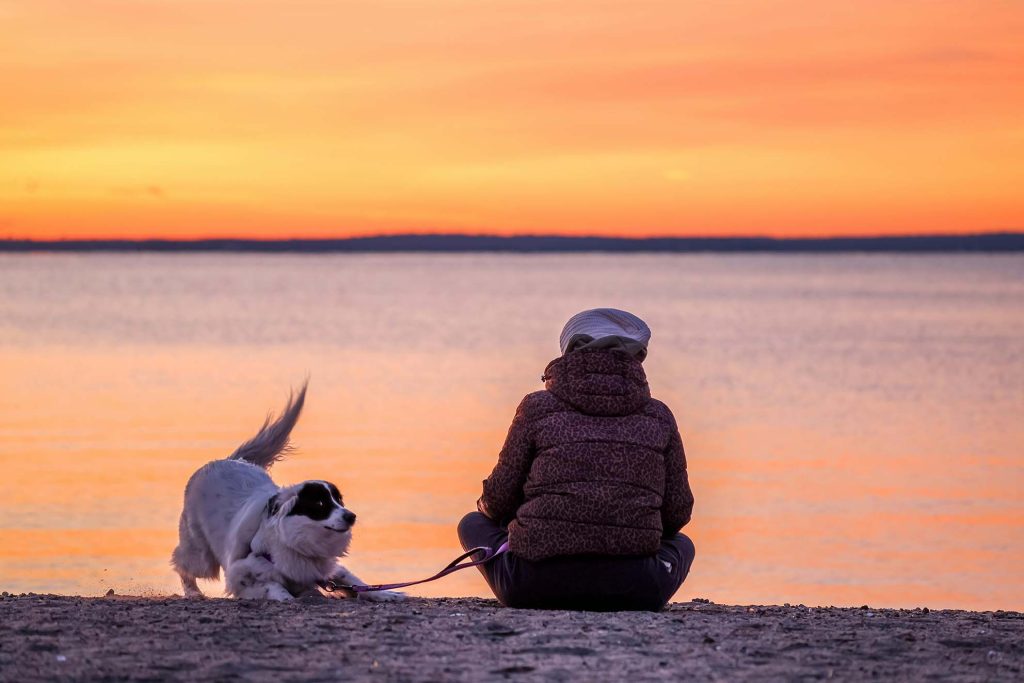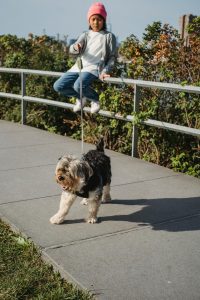Why Summer Exposes Reactivity
With more people walking dogs, biking, and enjoying parks, summer puts leash-reactive behavior on full display. If your dog lunges, barks, or fixates when they see another dog or person, you’re not alone — and you’re not stuck.
Leash reactivity isn’t about aggression. It’s usually rooted in overexcitement, frustration, or fear. Fortunately, with structure, clarity, and practice, it’s a highly trainable issue.
What Leash Reactivity Looks Like
You might see:
- Barking or growling at dogs, people, or bikes
- Lunging on the leash
- Pacing or pulling hard when spotting a trigger
- Freezing and staring
- Whining or spinning
Even if your dog is friendly off-leash, they can still be reactive on leash due to feeling restrained or overstimulated.
Step 1: Stay Calm and Take Control
Dogs feed off your energy. If you tense up, panic, or pull hard on the leash, your dog becomes more agitated.
Instead:
- Keep a neutral posture
- Use a clear, firm voice
- Maintain a relaxed but purposeful leash grip
- Stay in motion rather than freezing or retreating erratically
Your calm response builds their confidence.
Step 2: Create Distance From Triggers
The more distance you have, the more brain your dog has available to listen.
When you see a trigger:
- Cross the street if possible
- Turn and walk in a wide arc
- Step off the path to create space
- Use cars, trees, or park benches as visual barriers
Distance doesn’t mean avoidance — it’s management while you train.
Step 3: Use Engagement and Obedience as a Distraction
Redirect your dog’s focus before they fixate. Use commands like:
- “Look” or “watch me”
- “Heel” with consistent movement
- “Sit” with eye contact
- “Let’s go” to break away calmly
Reward your dog for checking in with you, not locking onto the trigger.
Step 4: Desensitize Gradually With Controlled Setups
Random summer distractions are unpredictable. To truly make progress, create controlled exposure:
- Practice passing another calm dog at a known distance
- Work with a friend who can help create walk-bys
- Use neutral dogs or people at parks during quiet hours
Keep sessions short, structured, and repeatable. Progress comes through reps.
Step 5: Address Leash Tension
Constant tight leash tension adds pressure and frustration. A proper heel with a loose leash teaches your dog to stay calm and close.
Use:
- Slip leads or training collars that allow for quick, clear corrections
- Direction changes to interrupt fixations
- Calm praise when your dog self-regulates
The leash should guide, not restrain.
Step 6: Practice “Threshold Training”
Before your walk begins:
- Calm sit at the door
- Wait for release word
- Structured exit from the house
- Controlled pace from the start
If your dog starts the walk in a frantic state, reactivity becomes more likely. Set the tone early.
Final Thoughts: Reactivity Is a Communication Problem, Not a Personality Flaw
Your dog isn’t “bad” or “aggressive” — they’re over-threshold and unclear on what you expect. Leash reactivity can be transformed into calm, confident walking with structure, repetition, and clarity.
This summer, take advantage of the distractions to build your dog’s skills — one calm, focused walk at a time.



